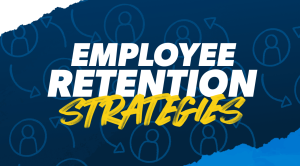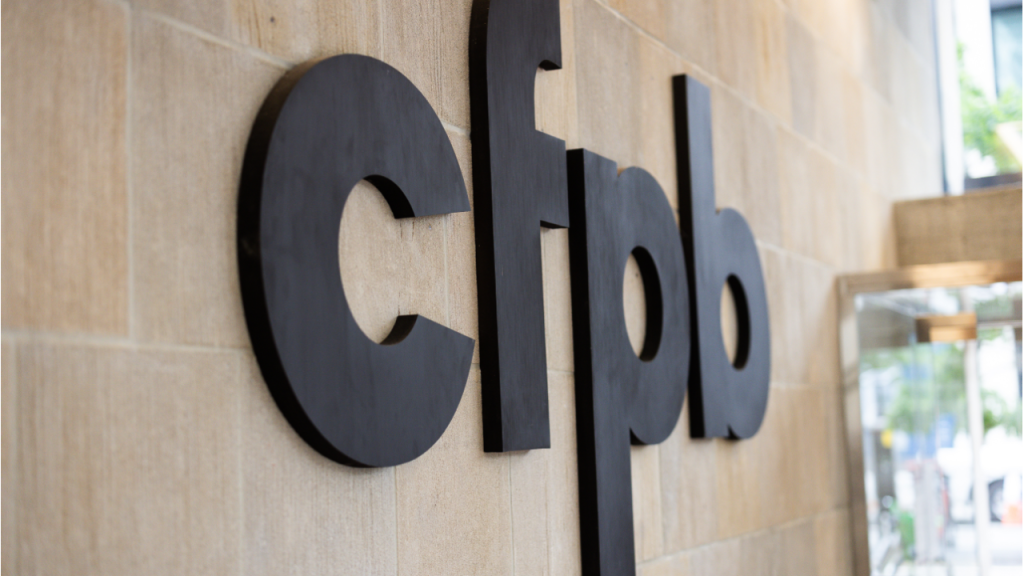People love their credit card rewards. Except when they don’t, which according to a new government report is actually a fairly common experience.
Important card rewards terms often hide in the fine print. And even if you manage to decode their complex language, there’s no guarantee they won’t change while you’re not looking. Understandably, that can create a lot of frustration — and it does.
A new report from the Consumer Financial Protection Bureau (CFPB) highlights common issues that rewards cardholders experience. Here’s what the report found, plus some advice on how you can avoid these frustrations.
Issues earning (or keeping) a sign-up bonus
A sign-up bonus is perhaps the easiest way to earn a large amount of rewards. For example, the Chase Sapphire Preferred® Card is currently offering one of the highest sign-up bonuses in the market. You can get 75,000 points after you spend $4,000 on purchases in the first three months with the card. That’s over $900 in value when you redeem your points for travel through the issuer’s portal.
You can get most of this information if you go to the card’s page on Chase’s website. However, for the details, you’ll need to click on the little asterisk next to the offer. Then, you’ll see the offer you’ll get may be different depending on whether you apply online or in a branch. You might also see that purchases that count toward the bonus don’t include balance transfers, cash advances and wire transfers, among other transactions. The offer details go on to explain what purchases qualify for bonus points, how you can use your rewards and how other benefits work. The whole page would probably take you between 10 and 15 minutes to read.
EXPAND
While this example is specific to Chase, you’ll most likely find very similar disclosures at other major issuers’ websites too. It’s no secret many people would rather skim through this kind of information, if they choose to read the terms and conditions at all. And even if they do, a wall of text in legalese isn’t exactly the most reader-friendly way to explain a rewards program. Even worse, some issuers might not do a good job of properly disclosing all the terms.
It’s no wonder cardholders run into all kinds of problems when trying to get a sign-up bonus. The CFPB report highlights the following issues:
- “Bait-and-switch” offers where the offer you receive is different from the one advertised. This can happen because issuers run different sign-up bonus offers through different channels. Terms may also vary depending on how you apply. For example, Bank of America faced enforcement action from the CFPB in 2023 as the issuer had failed to clearly disclose that an advertised sign-up bonus was only available with an online application. The bank had previously paid around $23 million to cardholders who were denied rewards bonuses.
- Offer limitations that issuers hide in the fine print or explain vaguely. This includes limiting the number of times a cardholder can earn a welcome bonus. For instance, American Express only lets you earn a sign-up bonus on each credit card once in a lifetime. Another common limitation is the types of purchases that qualify toward the bonus.
- “Churning” restrictions that prohibit cardholders from attempting to game a rewards system. The practice of churning involves repeatedly opening a credit card to earn an introductory bonus, spend the rewards and cancel the card. Issuers implement policies to protect themselves from those they deem churners. As a result, some cardholders become ineligible for any new bonus offer from the issuer, while others are required to pay back the value of the redeemed rewards.
Rewards devaluation
Credit card rewards are similar to a currency, and as such, they’re prone to inflation and devaluation. This is especially true for travel credit cards and co-branded cards. While an issuer can set consistent redemption rates inside its rewards ecosystem, it has no oversight when it comes to loyalty programs it partners with. And hotel and airline rewards programs can and do devalue their points and miles.
Let’s use the Chase Sapphire Preferred as an example again. You can redeem your Ultimate Rewards points for travel at the issuer’s portal at a consistent 1.25 points per cent value or transfer them to one of Chase’s partners. Let’s say you convert your Ultimate Rewards points into Southwest Rapid Rewards points. According to Bankrate valuations, Rapid Rewards points are worth 1.5 cents apiece, which makes the transfer a good deal — at least for now. The airline decreased the value of Rapid Rewards points twice in the past four years: by 6 percent in 2021 and another 4 percent in 2024.
As you can see, inflation happens to rewards, too. And their devaluation isn’t the only way they can lose value. The CFPB report describes the following issues cardholders face:
- Dynamic award pricing where redemptions are priced based on the current demand for cash tickets. This can result in redemption rates surging during peak travel periods which causes your rewards to drop in value.
- Obstacles when redeeming rewards, such as minimum requirement for redemption or limited redemption options. For example, if you’re redeeming for cash back, you may find you can’t redeem less than a certain amount. If your rewards balance is less than that, you’re out of luck. Plus, according to the report, some cardholders find the overall redemption process to be overly complex, which reduces the perceived value of rewards for them.
- Benefit changes that occur when a card issuer’s co-branded partner makes modifications impacting the card’s value. An example would be a co-branded airline credit card eliminating features that help cardholders earn elite status or limiting airport lounge perks.
Customer service or technology problems
It’s one thing to feel lost in the fine print or redemption rate charts. It’s a different kind of frustration when the issuer’s customer service is giving you the runaround when you have a rewards issue — or when you can’t use your points or miles due to a glitch.
Here are the common problems the CFPB report describes:
- Customer service issues that have cardholders call issuers dozens of times, stay on hold for hours and wait for months for resolution despite providing thorough documentation of the problem.
- “Doom loops” where cardholders get redirected from the issuer to its merchant or transfer partner only to repeat the cycle.
- Technical glitches that cause cardholders to experience delays and other issues when they attempt to redeem rewards.
- Failure to get reimbursement when cardholders lose their rewards due to technical glitches or other circumstances out of their control.
Loss of access to rewards
Nothing lasts forever, they say — and credit card rewards certainly don’t, even if they have no expiration date. Card issuers reserve the right to take away rewards in certain situations. In some cases, you can lose your rewards without any possibility of getting them back.
Going back to the Chase Sapphire Preferred we’ve been using as an example, let’s look at the card’s rewards terms. According to the agreement, you could lose your points immediately if your account is closed for fraud or misuse, including missed payments, churning practices, selling and buying points and more. It can also happen if you fail to comply with other agreements you have with the bank, or if Chase has a reason to believe you might not pay your debts on time (for instance, if you’ve filed for bankruptcy). But if your account is closed for any other reason, you’ll have at least 30 days to use your points.
The CFPB stated that 4 percent of account holders lose access to at least some of their rewards every quarter. Here’s how that tends to happen:
- Account closure, whether it’s an issuer’s move or happens by a cardholder’s request. That said, you’re more likely to get the time to retrieve your rewards in the latter situation.
- Points and miles expiration which is more common for airline and hotel loyalty programs and is usually tied to account inactivity.
- Trouble recovering rewards when an issuer revokes them. The report offers an example of a Barclays cardholder who lost nearly $15,000 worth of rewards. The issuer’s customer service informed the cardholder it was impossible to restore their points, which was false. The bank had closed the account in error and later in fact reinstated the cardholder’s rewards.
How to avoid common credit card frustrations
Clearly, card issuers have some work to do to ensure cardholders rarely feel blindsided using rewards credit cards.
“I’ve heard there are two potential takeaways from the CFPB looking into this,” says Ted Rossman, senior industry analyst at Bankrate. “One would be just maybe more disclosures and transparency… The other thing which floated [but] I think would be more difficult to do… would be guaranteeing that the miles you earn are worth a certain amount.”
We reached out to American Express, Chase, Bank of America, Delta Airlines, Southwest Airlines, and Barclays for comment on this story. Chase and Southwest offered no comment as of writing. Barclays and Bank of America declined to comment.
While changes are possible, they won’t happen immediately. That doesn’t mean you should swear off rewards cards altogether. Instead, consider taking preventative steps to avoid common issues.
Opt for simpler rewards cards
Many problems arise from the sheer complexity of rewards programs. There are seemingly countless terms and conditions to figure out — and they can change without you noticing. Not to mention, tracking point and mile values requires a special kind of dedication.
“I actually think this makes a case for cash back cards,” Rossman says. “That’s a category of the credit card world that has always been near and dear to me… Most people like cash back — we’ve actually seen that in our research. It’s very simple, very universal, especially in a time of high inflation. I mean, who couldn’t use more cash, right?”
And it doesn’t get simpler than flat-rate rewards which give you the same fixed rate on all purchases. For example, the Wells Fargo Active Cash® Card is one of our top picks for cash back. It has no annual fee and earns unlimited 2 percent cash rewards on purchases. You can redeem your rewards for purchases or gift cards, apply them to your Wells Fargo account or get cash at an ATM without worrying about fluctuations in rewards value.
If you’d prefer a travel credit card, you have options too.
“Some cards have the ability to redeem points at a fixed valuation,” Rossman says, “Like the Capital One Venture Rewards Credit Card where you can use their transfer partners, but you could also just redeem at a fixed rate and know exactly what you’re getting.”
The Capital One Venture earns 2X miles on all purchases, as well as 5X miles on hotels and rental cars booked through Capital One Travel. The issuer provides multiple ways to redeem miles, but if you want consistent value, you can use your rewards to cover travel purchases made in the last 90 days or book travel through the issuer’s portal. In both cases, your miles will be worth 1 cent apiece.
The Chase Sapphire Preferred is another good example. The rewards are generous, including 5X points on travel through Chase Travel, 5X total points on Lyft rides (through March 31, 2025), 3X points on dining (including eligible delivery services), select streaming services and online grocery purchases (excluding Walmart, Target and wholesale clubs), 2X points on other travel and 1X points on other purchases. While Chase has transfer partners, you can also redeem rewards for travel through the bank’s travel portal at 1.25 cents per point. This is an excellent value for an issuer’s portal.
Know your card’s terms and conditions
No one likes to read terms and conditions. And those who do read them may find the wording confusing and at times vague.
Still, those dense passages are the necessary evil that keeps you informed and protected as a cardholder.
“It’s simply important to understand what you can,” Rossman says. “I do empathize with the fine print and all the legalese, [but] I don’t think that’s going away anytime soon. It can be a pretty litigious kind of society.”
It’s best to get as much information on the card as possible before you even apply for it. And for the cards you already have, consult the cardholder agreement and your benefits guide. If something isn’t clear, try researching your question online. Chances are, someone has already written on the topic or shared their experience. And don’t forget — you can always get in touch with the issuer itself.
Avoid rewards hoarding
It might feel great to know you have a million miles sitting in your account. What’s not great is accidentally losing that million — which, as the report shows, does happen.
“Use your points and miles sooner rather than later,” Rossman says, “Don’t just hoard them for hoarding… It’s better to actually use them as you go because they… tend to get less valuable because of inflation and program changes.”
Remember that you don’t even need to cover the entire trip’s cost with rewards when you’re booking. Many programs allow you to pay with a combination of cash and rewards. This can be helpful if your points or miles tend to sit in the account for long periods while you’re saving for a vacation.
Be your own advocate
Of course, issues can still arise even when you’re fully aware of the terms and do everything right. In that case, don’t hesitate to reach out to the issuer for help. If customer service proves to be unhelpful, don’t let them off the hook. When you let the situation go, it’s not likely to resolve itself.
If you’re not getting any results, in some cases, it may be appropriate to file a dispute with the CFPB or another regulating authority. “It depends on what the issue is,” Rossman says, “But sometimes you can get a remedy that way. The CFPB’s complaint database is actually pretty effective.”
The bottom line
Rewards credit cards can provide incredible value — and they can also be incredibly annoying. From not being able to earn a sign-up bonus to dealing with rewards devaluation, there are many things that can turn you off this type of card.
But, information is power. If you’re highly familiar with your card’s terms, including its rewards program, you’re less likely to run into any unpleasant surprises. Don’t only read the big bold letters. Dig into the small print and contact the issuer about anything that’s unclear.
On a different note, give simpler cards a chance. Maybe a modest cash back card won’t help you earn a first-class trip to the Bahamas, and that’s OK. For many, offsetting part of a weekly trip to the grocery store is a great perk, too.
Read the full article here












